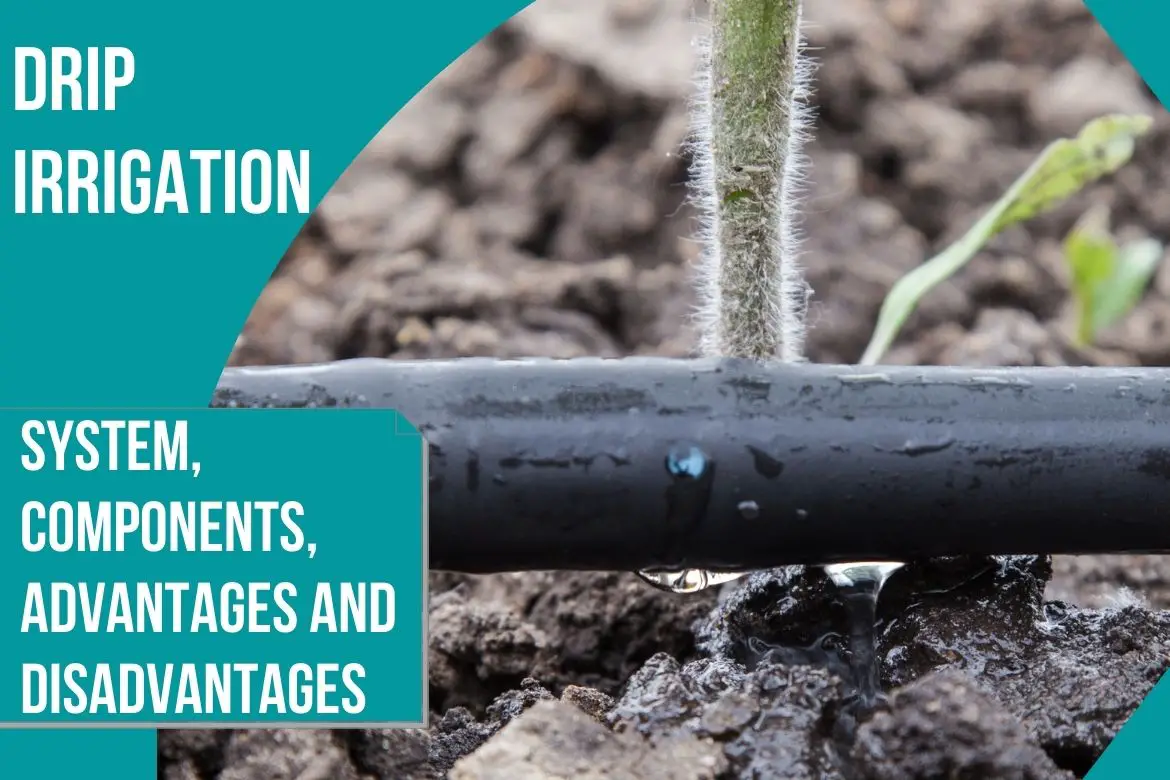Table of Contents
Introduction to drip irrigation
What is drip irrigation?
Drip irrigation is an efficient way of applying water at the plant root system at a rate that is nearly equal to the rate at which the plant consumes water (consumptive use rate), thus minimizing traditional water losses like soil percolation, runoff, and evaporation.
A drip irrigation system is the most effective irrigation method.
Water is applied in the root zone of plants at a low rate, under low pressure, and frequently for a long duration with drip irrigation.
A slow application of water to the soil may be done in drip irrigation, by the use of a surface, subsurface, bubbler, spray, or pulse system.
A system of emitters or applicators is placed near the plants and is used to spray water in the form of drops, streams, or a miniature spray.
With drip irrigation, fertilizer or bio fertilizers can be applied as well.
Drip irrigation is also known as localized irrigation, trickle irrigation, daily flow irrigation, diurnal irrigation, drop irrigation, sip irrigation, and micro-irrigation.
Micro–irrigation is the term used by the International Commission for Irrigation and Drainage (ICID). Drip irrigation is the term used by the American Society of Agricultural Engineers (ASAE).
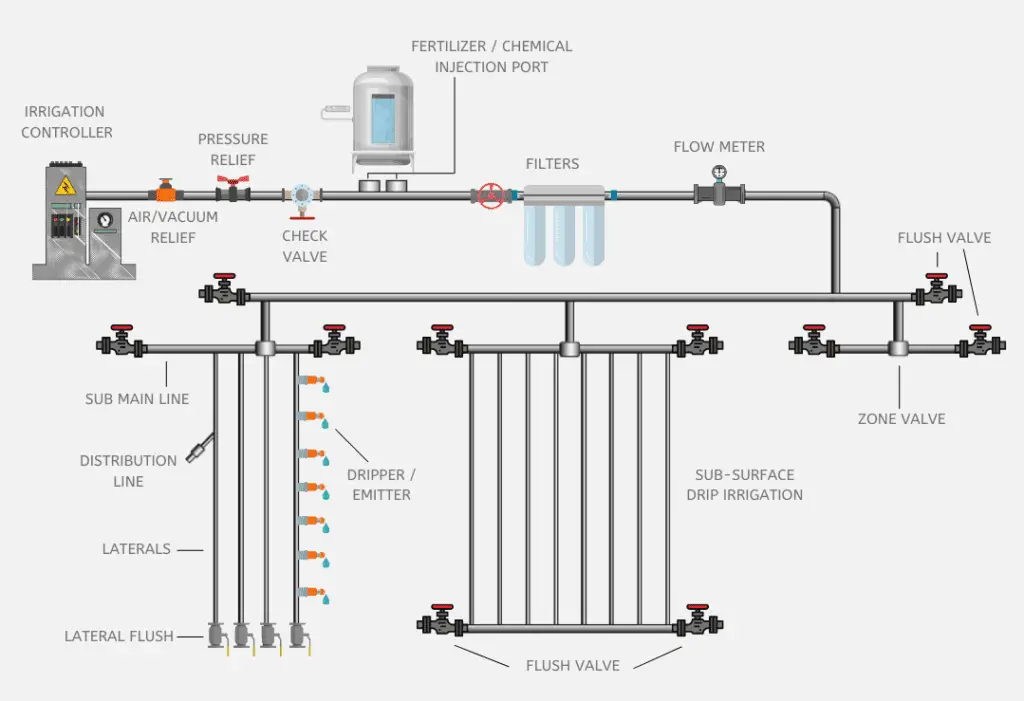
Type of drip irrigation system
- Surface drip irrigation system
Drip systems of this type are the most common and most popular. A surface drip system consists of emitters and lateral lines that are placed on the soil surface.
It can be used for both row crops and wide-spaced plants.
Emissions from single outlet point source emitters are less than 12 lpm, while discharging from line source emitters is 12 lpm.
Surface drip is advantageous due to its ease of installation and inspection, the ability to change and clean emitters, and to observe surface wetting patterns and measure individual emitter discharge rates.
2. Sub-surface drip irrigation system
Water is slowly applied below the surface through emitters in this type of drip irrigation system.
There is a difference between sub-surface drip irrigation and subirrigation, in which the water table is used to irrigate root zones.
Earlier this irrigation system had issues related to clogging. But since techniques of removing the clogging probelms have been devised, these subsurface drip irrigation system has gained more popularity.
Emitters pointed upward perform better than those pointing downward.
The sub-surface drip system is less likely to interfere with cultivation or any other agricultural practices, and may last longer.
Sometimes, a mix of surface and sub-surface drip irrigation methods is practiced in the same field. In this method the laterals are buried and the emitters are extended to the surface of the field with the help of riser tubes (sub-laterals).
A sub-surface drip system can also be created with perforated/porous pipes.Polyethylene and recycled rubber are used to make the porous pipe.
3. Bubbler drip irrigation system
Bubbler drip irrigation uses a point source to spray small streams or fountains of water.
Usually with a discharge rate of less than 225 lpm, however, the discharge rate is higher than surface and subsurface drip systems.
Discharge rates are higher than infiltration rates. For this reason, the distribution of water must be controlled with a basin around the plant.
Compared to surface and sub-surface drip systems, bubbler drip irrigation require less filtration, repair and maintenance.
4. Spray drip irrigation system
A small spray, jet, fog, or mist is applied to the soil surface in spray drip irrigation system.
In the case of surface, sub-surface, and bubbler, air is the medium in which water is distributed.
Trees or wide spacing crops are usually irrigated with spray system at a rate of less than 175 lpm.
Evaporation losses and high winds make spray systems vulnerable. However, these systems have the advantage of requiring little maintenance or repair.
5. Mechanical move drip irrigation system
In this system, bubbler technology is extended to large-scale row crops. A traveling drip system, spray-and-drag system, or hose-reel drip system is used to apply water.
The lateral lines move in a liner fashion in a travelling drip system. These lateral lines have the sprinkler systems attached to them. This is how a continuous stream of water is applied to each row.
This system has better water distribution uniformity and requires less pressure than conventional sprinkler systems.
Nevertheless, preventing soil erosion and runoff requires preventative measures since the rate of application is usually greater than the rate of infiltration.
In contrast to travelling drip systems, the drag-type or hopsereel system pulls the drip irrigation system across the field from row to row.
Methods such as this may be used for supplemental irrigation.
There are several advantages of mechanically moving drip irrigation systems, such as a possible reduction in clogging problems and a less expensive pipe network than surface or subsurface drip irrigation.
High initial costs, limited water application, and extensive maintenance are the disadvantages.
6. Pulse
A pulse drip system uses high discharge rate emitters, resulting in short duration applications of water.
It is applied in cycles of five, ten, or fifteen minutes every hour.
Pulse emitters are typically 4 to 10 times more powerful than typical emitters.
The pulse drip system has the advantage of reducing clogs. A disadvantage of this system is the requirement for an inexpensive pulse emitter with an automatic controller.
As the number of application cycles increase in pulse drip irrigation systems, startup and shutdown issues might become a problem.
Components of drip irrigation
- Water pump and prime mover
Water is supplied through the components of the system at a certain level of pressure by a pump of suitable capacity.
A water tank is usually the source of water. The drip irrigation system can, however, also use groundwater.
There is the possibility of organic and inorganic foreign bodies in water when the source of supply is a natural stream or farm pond. If this is the case, a suction filter should be used to obtain relatively clean water.
The prime mover of the pump is usually a diesel engine or electric motor. Recently, solar pumps are being popularized for drip irrigation purposes.
In most cases, centrifugal pumps are used as prime movers. For small systems, piston pumps may be used instead.
2. Control head / Control system
As part of the drip system, the control head regulates water supply, water pressure, filtration of water, and the addition of nutrients in the drip system.
Fertilizer applicators (tanks), filters, and control valves constitute this component.
(i) Fertilizer tank
A fertilizer tank is used to add nutrients, particularly nitrogen, to drip water. As a result, fertilizer can be applied directly with irrigation water, resulting in efficient use of fertilizers.
The inlet and outlet of the fertilizer tank are connected to the main line.
Part of the flow is diverted directly to the tank for dissolving nutrients, and the remainder rejoins the main line via the outlet.
At times, the connection of the fertilizer tank to the main line is in the form of a venturi. As a result, the velocity head increases and the suction is developed to force the water out of the tank, into the main line.
(ii) Filter
When a drip system is installed, a filter of good quality should be included.
Prior to reaching the drippers, the filter cleans the water supplied by the pump of suspended impurities.
Impurities in irrigation water may cause clogging.
By removing organic particles and inorganic particles bigger than the smallest inlet or outlet hole, filtration equipment protects irrigation systems from clogging.
Make sure to determine if chemicals or acids should be added before or after filteration equipment if they need to be added to water for treatment. This is because some chemicals may react with the material used to manufacture the filters.
Fertilizers soluble in water are usually injected after filters and must be in solution, while chemicals must be tested before injection into irrigation systems.
Budget, irrigation system, and water quality are all important factors to consider when choosing a filtering system. There will sometimes be a need to use more than one type of filter.
Filtration is measured in microns or mesh. The only purpose of filters is to remove particles from water; they do not remove dissolved solids, salts, and other toxic substances. Chemical treatment is needed to alter the water’s chemistry.
Types of filters in drip irrigation:
Water for irrigation systems is filtered using four main methods: screen filters, media filters, disk filters, and centrifugal filters.
(a) Screen Filter

The most common type of filter is a screen filter, which is also the least expensive.
Screen filters are excellent at removing hard particles, such as sand, from water. However, organic matter cannot be removed effectively because non-solid materials tend to slip through the screens or embed themselves in the screen material.
You can wash screen filters by hand or flush them with water. Cartridge filters, a type of screen filter, are more effective at removing organic matter.
(b) Media Filter

A media filter pumps water through a tank that contains tiny, sharp-edged particles. Uniformly sized crushed silica sand is typically used for making these particles.
Because these particles have sharp edges, they will entangle organic matter. That is why media filters are effective at removing nonsolid matter.
Conversely, hard substances like sand particles that get mixed with the media particles cannot be removed by these methods.
Clean, filtered water is backflushed through the tank to clean the media filters.
(c) Disk Filter

The disk filter is a mix between a screen filter and a media filter, since it is able to efficiently remove sand as well as organic matter.
A stack of round disks, each with a groove on one side, are stacked together. The disks create tiny gaps through which water flows, trapping all matter that cannot pass through.
It is easy to clean these disks by unshackling them and hand-washing them.
(d) Centrifugal Filter

Due to their primary function of removing sand from water, centrifugal filters are also known as sand separators.
Centrifugal forces in the filter forces the sand in the dirty water, towards the outer edge of the cylinder. The sand finally settles down at the tank’s bottom.
During the initial start-up and shutdown of the system, sand particles can pass through the filter if it is not sized properly.
Separating organic matter with a sand separator system will not be effective since it will only remove particles that are heavier than water.
3. Distribution lines
(i) Main Line
Water is carried in the main line for the irrigation system. This line connects the sub-mains to the water supply.
Flexible materials such as PVC (polyvinyl chloride) or plastics are commonly used for the main pipes.
A rigid pipe made of asbestos cement or galvanized steel can also be used for conventional sprinkler irrigation similar to the mainline.
(ii) Sub main Line
The sub-main line feeds water to the lateral lines. The lateral lines may be present on either side or only one side of the sub main line.
PVC or medium density polyethylene (PE) are used for making sub main line.
It is important to balance the diameter of mains and sub-mains.
Based on the discharge rate, number of sub-mains, and friction loss in pipes, the diameters of the lines are determined.
(iii) Lateral Lines
Typically, lateral lines are made of low density PE, with a diameter of 1 to 1.25 cm. The 1.2 cm diameter laterals are commonly used.
Occasionally, rigid PVC pipe laterals with a small diameter are used.
In the case of orchards, the distributors/emitters/dripper are installed at predetermined spacings in the lateral lines.
It is typical for each lateral line length to be 40 meters.
In general, a pressure drop of 10 percent (maximum) is preferred between two ends of a lateral.
4. Dripper / Emmiter / Distributer
Emitters are also known as drippers. These emitters discharge water into the soil from the lateral pipe.
Polypropylene is typically used to manufacture drippers.
Drippers can be classified in two categories depending on where they are attached in the lateral line.
- Inline dripper : These type of drippers are attached inside the lateral line.
- Online dripper : These type of drippers are attached on the lateral lines by drilling a small hole on the lateral line.
Types of drip irrigation emitters
(i) Long-Flow Path Emitters
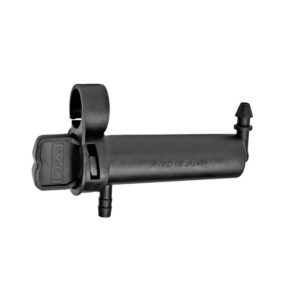
Through a very long and narrow passage or tube, water is rooted.
Water pressure is reduced and the flow is more uniform because of the small diameter and great length of this path.
The water path of a long-path emitter circles around and around a barrel-shaped core.
Due to the need to fit the long tube into the long path emitter, long path emitters are generally quite large in size.
(ii) Soaker Hose, Porous Pipe, Drip Tape, Laser Tubing

Drip tapes, soaker hoses, porous pipes, and laser tubing are drip systems with very small holes in the drip pipe.
They are either made from materials which are porous in nature or very small holes are drilled in the pipe by using a laser.
They have a comparitively low price. However, the downside of these pipes is that the fine pores tend to get easily clogged (because of hard water that contains higher levels of minerals).
Typically, these systems are used in portable irrigation systems. After each crop season, these pipes are either recycled or discarded.
(iii) Short-Flow Path Emitters

They are similar to the long path emitters, but their water paths are much shorter.
Advantages: Low cost and low-pressure operation, such as drip irrigation water fed by rainwater barrels.
Disadvantages:Easily clogs and distributes water unevenly compared to other emitters.
(iv) Tortuous-Path or Turbulent-Flow Emitters

This is used on long paths, but with sharp turns and obstacles.
Turbulence in the water caused by these turns and obstacles reduces the flow and pressure.
This type of emitter usually has a short length and large diameter.
(v) Vortex Emitters
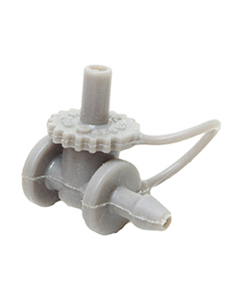
To reduce flow and pressure, water runs through a vortex (whirlpool).
In a vortex, there is a drop in pressure at the center.
When the water is swirled around the outlet hole, the pressure is lowered and the flow through the hole is reduced.
Vortex emitters are tiny and cheap (their size is identical to a large pea), but they clog quickly.
(vi) Diaphragm Emitters

To reduce the flow and pressure, a flexible diaphragm is used.
The diaphragm can move or stretch to restrict or increase the flow of water.
Controls pressure and flow more accurately than most of the drippers, but wears out after some time.
(vii) Adjustable Flow Emitters

Adjustable flow emitters have a variable flow rate that can be adjusted via a dial attached to it.
Most of these emitters are similar to short-flow path emitters in terms of design.
Adjustable flow emitters have little pressure compensation and a large range of flow rates.
(viii) Dripline, Dripperline
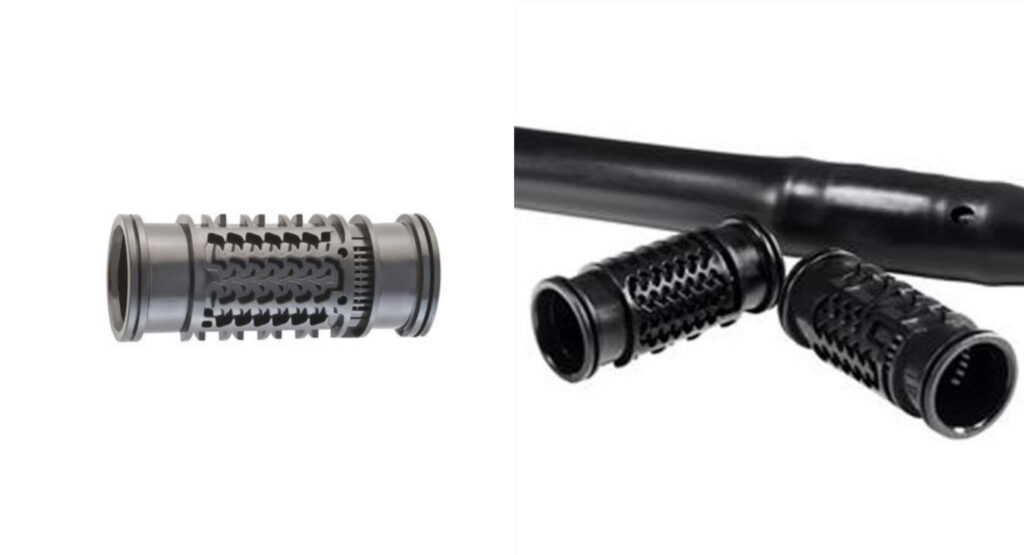
Among other names, drip line, dripper line, and other variations are used to describe drip tubes with factory-installed emitters.
There are often no visible emitters outside the tubing, just a hole where the water comes out.
Most emitters are of the tortuous-path or diaphragm type, but there may be others as well.
The emitters are uniformly spaced along the tube; there are often several options for spacing the emitters.
Due to the preinstalled emitters, drip lines have the advantage of being easy to install.
5. Pressure Gauge

Used to monitor the water pressure in drip irrigation system
6. Flush valve

This valve is placed at the end of the sub-main line to flush the dirt and debris.
7. Control valve

This valve is used to control the flow of water.
8. Air valve

It is used to release air into the drip irrigation system and also assists in preventing the entry of mud in the drippers.
Cost of drip irrigation system
Drip irrigation system price depends on many factors such as
- Type of crop being cultivated
- Area of the land
- The choice of component supplier and manufacturer
- Type of the terrain
- Water quality
- Environmental conditions
- Soil quality
- Pattern of sowing
Below is the breakdown of the approximate cost of drip irrigation system in India. This breakdown is provided by the government of India under the scheme Prime Minister Krishi Sinchayee Yojana. Complete guidelines can be found here : Operational Guidelines of Per Drop More Crop (Micro Irrigation) Component of PMKSY.

Page number 6 and page number 7 of the PMKSY document also states the subsidy one can avail for installing micro irrigation.
Assistance for installation of micro irrigation system is limited to five hectares per beneficiary. The land holding of a beneficiary to be covered under drip/sprinkler system could be located in one contiguous area or at different locations, but the financial assistance will be limited to the overall ceiling of 5 ha. Those beneficiaries, who have already availed subsidy benefits for his /her farm, can not avail the assistance for the next seven years. A beneficiary if availed the benefit of subsidy for micro irrigation for a particular farm would 7 be eligible for subsidy again for the same land only after the end of projected life of the micro irrigation system which is 7 years.
Crops suitable for drip irrigation
The drip irrigation method is ideal for row crops (vegetables, soft fruit), trees and vines that can be provided with multiple emitters.
Due to the high capital costs involved in installing a drip system, only high value crops are generally considered.
A drip irrigation system can be installed on any farmable slope. Crops are usually planted along contour lines, and water supply pipes (laterals) are laid along the contour lines.
In this way, changes in land elevation have the least impact on emitter/dripper water discharge.
Most types of soil can also be irrigated by drip irrigation.
Clay soils require slow water application to avoid surface water ponding and runoff.
For sandy soil, to ensure adequate lateral wetting of soil, higher discharge rates of emitters are needed.
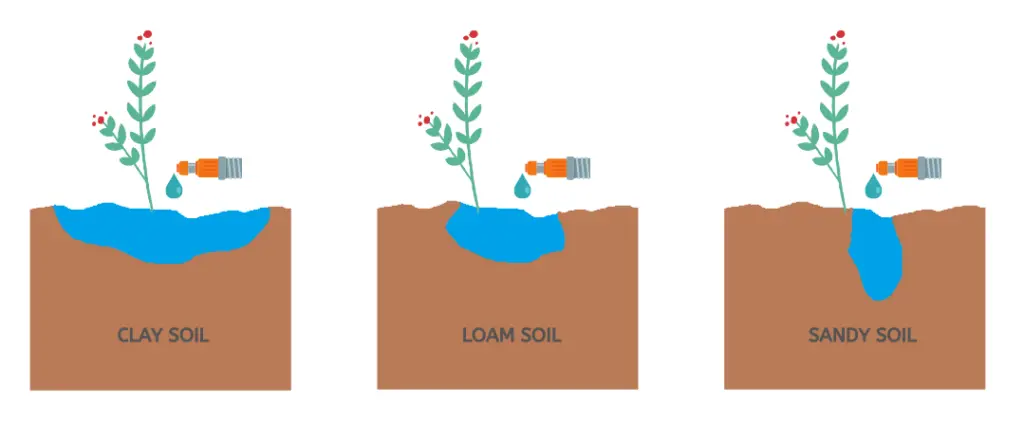
- Cereals
Corn, Sorghum, Wheat
2. Flowers
Chrysanthemum, Camation, Jasmine, Rose, Ornamental shrubs and trees (All)
3. Fibres
Cotton, Sisal
4. Fodders
Pastures (All), Alfalfa, Asparagus
5. Oilseeds
Groundnut
6. Nuts
Almond, Arecanut, Cashewnut, Coconut, Macadmaia, Walnut
7. Orchards
Amla, Almond , Apple, Apricot , Avocado , Banana , Ber (Jujube), Betelvine , Boysen berr, Cherry , Chikoo (Sapota, Sapodilla) , Citrus , Custard apple , Fig , Grape (Table & Wine), Grape fruit , Guava , Lemon, Lime, Mango, Mosambi (orange), Naval Orange, Papaya, Peach, Pear, Persimmon, Pineapple, Plum, Pomegranate, Strawberry, Tangelo, Valencia Orange, Watermelon
8. Plantation crop
Bamboo, Cocoa, Coffee, Mulberry, Olipalm, Rubber, Sugarcane, Tamarind, Tapioca
9. Vegetables
Bitter Gourd, Brinjal, Cabbage, Capsicum, Chilly, Cucumber, Okra, Onion, Peas, Spinach, Cauliflower, Pumpkin, Ridge Gourd, Tomato
Advantages of drip irrigation
- Easier management
It is possible to practice irrigation and farming at the same time. There is no interference with other farming practices such as spraying, harvesting, processing, weeding, etc., with drip irrigation.
Crop fields are easily accessible to farmers at all times. This is not possible with other irrigation methods.
2. Water saving
In general, drip irrigation requires less water than conventional irrigation methods.
Despite this, the amount of water that can be saved on a farm depends on the crop, the soil, the environment and management strategy.
It is usually possible to save 30 to 60 percent of water depending on the cropping area and level of irrigation management. Some of the reasons for saving water with drip irrigation include:
a. Instead of the whole plot, only a specific small area is wetted.
b. The amount of water lost to evaporation is lower.
c. The amount of water in the root zone is evenly distributed.
d. There are no percolation losses.
e. Weeds are not able to take water from the soil.
3. Labor saving
Comparatively to conventional irrigation, drip irrigation saves a lot of labor. Nevertheless, the system operates at a low labor input only if it is properly designed, correctly installed, and supplied with filtered water of good quality.
In countries with scarce and expensive labor, saving on labor is very attractive.
Labor savings can be significant (60-90%), since the system eliminates the need to construct borders, bunds, and other labor intensive works associated with traditional irrigation.
4. Energy saving
The amount of water pumped is reduced, thereby saving energy.
Drip irrigation uses less pressure than other forms of pressurized irrigation. Therefore, it is more energy-efficient.
However, it is only through efficient irrigation that conventional irrigation can be significantly reduced in energy consumption
5. Increase in plant growth and yield
Due to the frequent application of water at a predetermined rate, soil moisture in the root zone remains relatively constant in drip irrigation. In contrast, in conventional and some sprinkler irrigation, soil moisture content can fluctuate widely.
Increased yield occurs as a result of frequent drip irrigation due to optimum soil moisture and temperature, good aeration, better conditions for root development, and reduced disease factors.
In drip irrigation, plant growth is also affected positively due to the distribution of water along rows and the water holding capacity in heterogeneous soils.
6. Improved fertilizer and other chemical application
In many crop production scenarios, drip irrigation has proven beneficial for fertilizer application. By using drip irrigation, fertilizer application is more efficient because :
(a) fertilizer is applied frequently at various stages of plant growth in accordance with the plant’s requirement for water,
(b) efficient fertilizer distribution with no runoff or leaching losses. A study showed 30-40% fertilizer/chemical savings (Singh, 2000).
7. Ability to use saline water
In drip irrigation systems, water is applied frequently to keep the salinity of the soil diluted and below the damage threshold.
This eliminates the issue of saline water being used with conventional methods, where soil-moisture content fluctuates greatly, causing plants to be affected by salt.
Continuities in water feeding lead to forcing the salt to accumulate on the side and under the root zone of the plant.
Rain (20-30 cm) can flush these soil deposits from the field.
8. Restricted weed growth
Drip irrigation irrigates only a portion of the soil surface. Due to this, weeds don’t get a chance to grow over the entire area.
Drip irrigation also allows fewer weed seeds to reach the field than other methods due to filtered water.
9. Using poor soils more effectively
The surface method cannot be used to irrigate light soils. Percolation loss will be high.
Due to a low infiltration rate, heavy soils cannot be irrigated by sprinkler.
In both cases, drip systems are suitable.
10. Easier pest control
The access to the field at all times and the dry foliage and soil surface facilitate easier, more efficient, and more effective pest and weed control.
The plants and fruits are mostly dry, hence this reduces the occurrence of pests and diseases.
11. No soil erosion
Drip irrigation uses much less water (less than the rate of infiltration). Due to this, soil erosion is much less likely to occur than with other conventional methods.
12. Flexibility and easier to change
Once the drip irrigation system has been used in a field for a season or two, the spacing of the drippers, laterals, etc. can be adjusted, shifted, and accommodated in the same or other fields as needed.
Disadvantages of drip irrigation
1 . High initial installation cost.
2. More skills and technical knowledge is required to operate drip irrigation at optimum and efficient levels.
3. The water source has to be reliable and should be of decent quality. Bad water source will introduce a lot of issues like increasing salinity or clogging of drippers.
4. The maintenance cost will become high due to miss management and also the clogging of drippers/emitters can prove to be a huge problem at times.
5. Lack of third party support and customer service can be an issue
6. Lack of availability of spare parts in some region also is a major concern.
7. As drip irrigation only waters a specific portion of the land, complete development of soil microbiota, and the mineralization of soil organic matter and soil amendments can not be achieved in the whole field.

